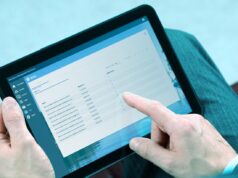Everybody wants to do good at work and impress their bosses with their productivity. Productivity became imperative in the Covid era when most businesses worldwide shifted to remote work.
Two years ago, many business leaders constantly reminded their employees that it’s crucial to stay highly productive while working out of the office.
This is why remote workers started working faster, staying long after hours, trying to complete numerous tasks to prove to their bosses that they were working.
This dangerous misconception about productivity, now labeled as “false productivity”, can lead your employees to burnout, harming their performance and, more importantly, their health permanently.
So how can you make a difference between genuine productivity and false productivity?
False Productivity Vs. Real Productivity
Measuring productivity through quantifiable outcomes may not work in knowledge-based
industries. Because the quality of their outcomes can’t always be quantified.
For example, a content writer may delete over 1000 words while editing. But this won’t make them unproductive if they create two clear, informative, high-quality blog posts at the end of the day.
Beating false productivity means dedicating more time to working on meaningful tasks that contribute to reaching company goals, limiting the time spent on distractions, routine tasks, and work for work.

Here are some tips to help you do this and show your employees how to use their time more effectively.
Employee monitoring can help you get a better understanding of how your employees spend their time at work. You can use this information to show them how to manage their time better and spend it on focused, meaningful work that drives real productivity. You can check out Insightful and make a well-informed decision about involving an employee tracking app in your workflow.
Stop with the Hustle Culture
The hustle culture expects that an employee’s day looks like this
Sleep-Work-Sleep-Repeat.
And this sounds exhausting, but workers immersed in the hustle culture believe that they need to work harder, faster, more day-in-day out to reach set goals.
While working hard usually pays off, the question is whether the number of clocked-in hours truly reflects employee productivity.
It depends on how these hours are spent. If employees tend to multitask, jumping from emails to Slack now and then, disrupting their creative work- they are just falsely productive, failing to deliver quality work.
The same goes for those who spend hours in ineffective meetings. They can spend half of this time working on a significant project or having lunch.
The bottom line is quantity isn’t quality when it comes to productivity.

So you need to stop encouraging the hustle culture in your company and help your employees shift their perception of productivity by focusing more on finishing meaningful work rather than getting routine jobs done.
Limit the Distractions at the Workplace
Attention and focus are prerequisites for high-quality results. But how to stay focused and intentional to do meaningful work when you are bombarded with various notifications almost every minute of the day?
It is a challenging task with smartphones delivering heaps of information at hand, but it can be done.
First, you need to show your employees how much time they waste checking their email or Slack messages each day. According to research by John Nixon from the Bank of England, employees tend to check their phones twice a minute to once every seven minutes.
Attention disruptions like emails and video calls can lower employees’ IQ by 10 points making it nearly impossible for them to commit to significant creative work.
Unfortunately, employees are often unaware of how rushing to address every incoming email or direct message leads to false productivity. So you can use software for employee monitoring to show your employees the time they tend to spend using different apps each day. Then you can help them become more time efficient by limiting time spent on answering emails, shifting it to completing critical tasks and projects.
Eliminate Ineffective Meetings

Do you have a calendar crammed with meetings?
Or do you often host meetings to convey a message that can be summarized in an email?
Sure you do, as many of your employees do also. Working on a packed schedule, hopping from one meeting to another isn’t going to portray you as highly productive. Quite the contrary, most of these meetings you and your teams tend to spend hours on are ineffective and distracting. This is especially true if you end meetings with no visible results or actionable outcomes. Before you decide to trap your employees’ precious time with numerous weekly meetings, ask yourself the following:
Can I convey this message via email?
Do I need to have all these one-on-ones or I can host a single team weekly instead?
Shortly put, you should stop wasting your time on meetings faking productivity and host them only when:
- You need to share sensitive information with your team members
- You need a fresh perspective on a current issue you’re tackling
- When you have enough time to present a situation in detail, making sure that you aren’t disturbing your employees’ workflow.
Multitasking is a Synonym to False Productivity
Once praised as a valuable skill many candidates loved to include in their resumes, multitasking has proven to be a significant distraction that may urge you to do zillion thighs in a day without a single productive outcome.
Contrary to popular belief, humans are not capable of multitasking since our brain isn’t wired to share attention to several different tasks at the same time.

So if some of your employees tend to jump from one task to another, wanting to finish multiple assignments simultaneously, without getting anything done at the end of the day, you need to react quickly and help them abandon this ineffective practice.
By using software for employee monitoring transparently and allowing your employees access to their dashboards, you’ll offer them real-time, accurate information on how they spend every moment at work. This insight may help them realize how multitasking and context switching affects their productivity. Your employees can also use this data to redistribute workloads according to their productivity fluctuation pattern. This will allow your team members to commit to deep focused work when they’re most productive, leaving minor work-for-work tasks for the time when their productivity and focus drop.









